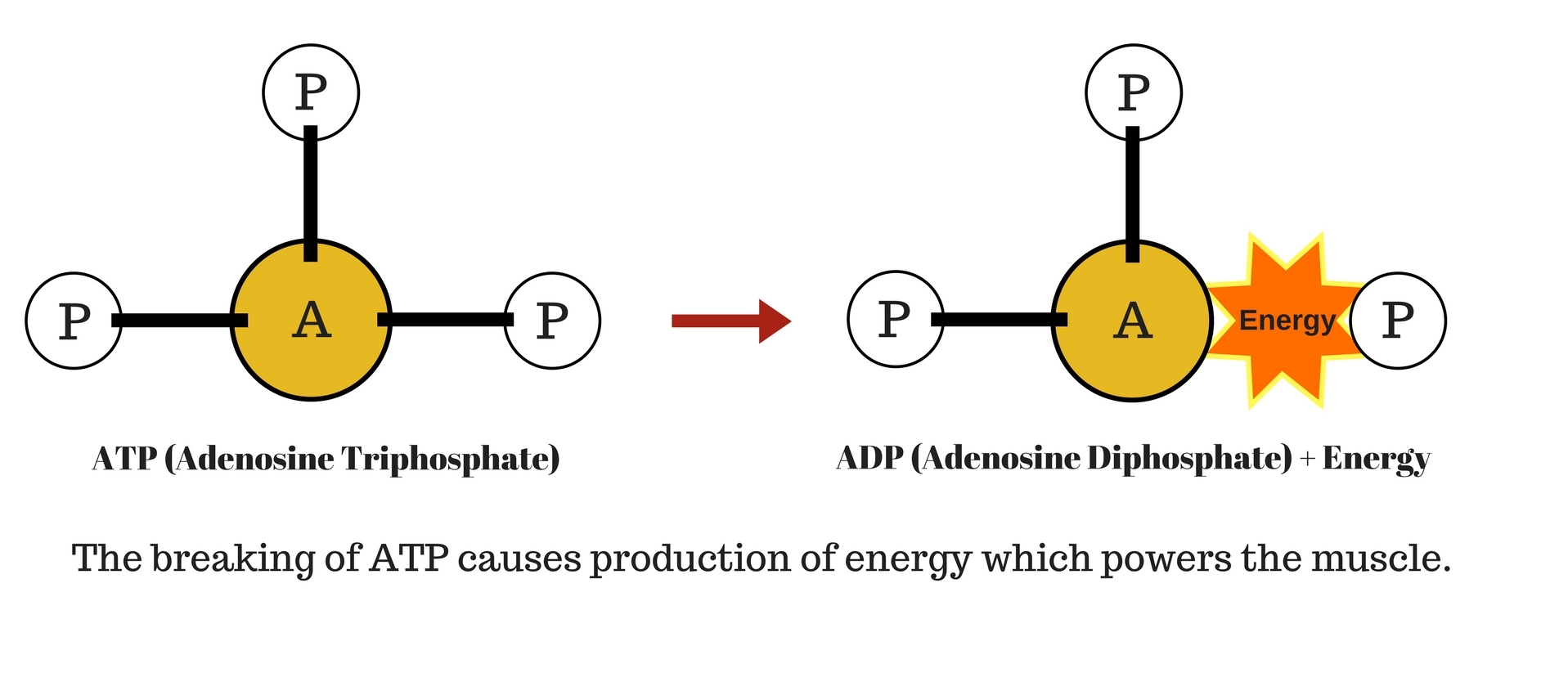What Does Creatine Do And How Does It Work?

Creatine is one of the most popular supplements of all time. It’s purported to increase strength and endurance during training sessions, as well as enhancing your overall muscle mass.
I’m going to give you the full breakdown of creatine and all the common questions related to this supplement while ending with the all-important question: is creatine worth including in your supplement stack?
What is Creatine?
Creatine is simply a combination of three amino acids: glycine, arginine, and methionine. Despite what you may or may not have heard, this is all creatine actually is.
Creatine is produced by the body and also found in quantities in high-protein foods such as meat and fish.
Creatine is a completely natural compound and is not synthesized in a lab.
However, the supplemental form of creatine is synthetically derived from sarcosine (sodium salt) and cyanamide (organic amide).
How Does Creatine Work?
Without getting too complex, we’re going to have to delve into a bit of science to explain how creatine functions in the body.
First, we need to understand a little biochemistry regarding what’s known as ‘ATP’ (adenosine tri-phosphate).
ATP is the body’s natural energy source and is derived from oxidizing nutrients from protein, fats, and carbohydrates primarily. ATP is responsible for practically every function in the human body, even the production of more ATP! ATP provides all this energy by hydrolyzing a phosphate group.

When a phosphate group gets hydrolyzed, energy is given off in the form of heat to drive the process being performed. When this happens ATP loses one phosphate and becomes what’s then known as ‘ADP’ (adenosine di-phosphate).
Now, when you ingest creatine (or after the body produces it), it seeks to bind with a phosphate molecule to form what is known as ‘creatine phosphate’.
ADP is worthless to the body unless it gets recycled back to ATP. This is where creatine steps into play, by donating a phosphate group to ADP to recreate ATP.
Creatine Phosphate + ADP = ATP + Creatine
Now you see why creatine supplementation is so popular. In a nutshell, it helps the body re-create energy and become more energy efficient, which should translate to harder and longer workouts, as well as more productivity during sessions overall.
How creatine helps you gain muscle?
Creatine doesn’t build muscle directly. Remember, it helps in ATP production.
Bodybuilding is hard work, and creatine will help you get the most out of the time you spend in the gym.
Creatine will help power your muscles through increased energy production. It won’t build muscles directly but it will help you push more. More weight. And more reps.
More weights and reps means more power and hypertrophy!
How well studied is Creatine?
Creatine is arguably the most studied ergogenic aid of all time, so the research is very extensive on how it works in the body as well as its potential to increase performance and your overall physical development.
There are literally thousands of studies on how creatine can be advantageous to an athlete lifting iron on a daily basis, so supplementing with the compound should be on your radar if you’re looking to improve performance.
Is Creatine Safe?
There has not been a single study to date that shows creatine is unsafe for human consumption. Some individuals experience an upset stomach from taking creatine on an empty stomach, but again, this is rare.
Another myth regarding creatine is that it’s harmful to the kidneys. There has been zero evidence to suggest any correlation between creatine supplementation and kidney damage to date.
Overall, creatine appears to be extremely safe for human consumption, and no serious adverse effects on health have been discovered to date.
Oh, and for all your friends that are adamant it’s a harmful steroid, remind them of the above: it’s simply a combination of three amino acids found naturally in the body. Nothing more, nothing less.
What is a Loading Phase for Creatine, and is it necessary?
A ‘loading phase’ on creatine refers to multiple small dosages (usually 5 grams) consumed frequently during the first week of creatine use to saturate your cells with the compound more quickly.
After this initial loading phase, the user will then progress onto a ‘maintenance phase’, which usually consists of taking the supplement daily in 3-5 gram dosage.
Generally speaking, it takes up to 30 days of consistent usage for creatine to saturate muscle cells in a 3-5 gram daily dosage. A loading phase can help speed up the saturation of the cells, it can help you to see effects more quickly.
Here’s how my loading phase looks like:
Day 1: 10 grams Day 2: 20 grams Day 3: 20 grams Day 4: 20 grams Day 5: 20 grams Day 6: 10 grams Day 7: 10 grams
What is the recommended dosage of creatine to experience its benefits?
As aforementioned, most individuals will achieve total cell saturation by consuming a consistent dosage of 5 grams daily, after the initial loading phase has been followed.
There is some debate as to whether an even lower dosage (3 grams) solely on training days is all that’s required to benefit from creatine. This may or may not be true, depending on your overall body mass. However, I recommend playing it safe with a 5-gram dose, given how affordable the supplement is.
What is the best time to take creatine?
This is the subject of wide debate, but it is my opinion that pre-workout is best.
Given that the body needs to produce more ATP during your workouts, it makes sense to try to assimilate creatine pre-workout to fuel your body’s stores.
But since the compound requires time to assimilate, it won’t necessarily give you more energy taking it immediately before you train – especially if you’re taking a consistent maintenance dosage already, as your cells will already be saturated.
Alternatively, you can consume creatine with your post-workout shake.
Overall, the most important ‘time’ to take creatine is consistently each day. Nothing more, nothing less.
Will creatine make me ‘hold water’ and become puffy?
Creatine will not make you fat or balloon your face and belly.
It is laughable to see some people claim creatine made them fat because of the increased water retention the compound causes.
To confirm: there is a small, subtle increase in water retention (which is positive, since the cells store more energy) while supplementing with creatine. Since the compound is an osmotically active substance, this is to be expected and coincides with an increase in muscle mass.
If you’re overly concerned with this factor of supplementing, then it’s likely you just need to burn more body fat overall.
Do you need to cycle creatine?
It is not necessary to cycle creatine, but it may help.
Your body is very adept at reinstating an equilibrium and looking for balance, so over time it may start to bring creatine levels back to normal.
A short break of around 4-8 weeks during this period, followed by a loading phase again can help to kickstart strength gains in the gym, although there may be a small loss of strength as you cycle off the supplement temporarily.
What are the other forms of creatine, and are they advantageous over creatine monohydrate?
If you look online, you’ll notice around a dozen forms of creatine which all say they’re the next revolutionary breakthrough form of the compound. These range from creatine ethyl-ester to kre-alkalyn, to nitrates to liquid creatine.
Ignore all these exotic forms of creatine, and stick with plain micronized creatine monohydrate; it’s the most widely studied form of the compound and none of the others have proven additional benefits besides exaggerated marketing campaigns.
Does Creatine have synergy with any other supplements?
Creatine stacks well with a number of compounds, but it’s debatable whether there is any synergy directly between the compounds it may or may not interact with.
You can read about my pre-workout formula here for some of the supplements I take alongside creatine to maximize workout performance.
Some compounds you can take alongside creatine post-workout that may have overlap in enhancing performance include:
- L-Citrulline – 6 gm
- Beta-Alanine – 2 gm
- L-Carnitine L-Tartrate – 2 gm
- Caffeine – 100-200 mg
What are some good sources of creatine found naturally within food?
To consume adequate amounts of creatine from food to increase performance isn’t realistic, you just can’t enough meat to not want to supplement.
- Beef (5 grams per 1.1 kg)
- Chicken (3.4 grams per 1 kg)
Other sources include liver, kidney, and lungs – primarily animal organs.
However, it is important to note that cooking these foods often denatures the creatine content, which puts into perspective the convenience of supplementing with the compound directly.
Save yourself the stress and purchase some micronized creatine monohydrate instead.
Conclusion
So there you have it. Creatine is safe, effective, and a must-have for any serious lifter looking to increase performance, enhance overall muscle mass, and generally become a better athlete. Add it to your supplement stack, and keep those gains ticking along nicely.

